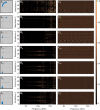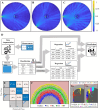A novel concept of an acoustic ultrasound wearable for early detection of implant failure
- PMID: 39732847
- PMCID: PMC11682276
- DOI: 10.1038/s41598-024-82743-7
A novel concept of an acoustic ultrasound wearable for early detection of implant failure
Abstract
Mechanical failure of medical implants, especially in orthopedic poses a significant burden to the patients and healthcare system. The majority of the implant failures are diagnosed at very late stages and are of mechanical causes. This makes the diagnosis and screening of implant failure very challenging. There have been several attempts for development of new implants and screening methods to address this issue; however, the majority of these methods focus on development of new implants or material and cannot satisfy the needs of the patients that have already been operated on. In this work we are introducing a novel screening method and investigate the feasibility of using low-intensity, low-frequency ultrasound acoustic waves for understanding of interfacial implant defects through computational simulation. In this method, we simultaneously apply and sense acoustic waves. COMSOL simulations proved the correlation between implant health condition, severity, and location of defects with measured acoustic signal. Moreover, we show that machine learning not only can detect and classify failure types, it can also assess the severity of the defects. We believe that this work can be used as a proof of concept to rationalize the development of non-invasive screening acoustic wearables for early detection of implant failure in patients with orthopedic implants.
© 2024. The Author(s).
Conflict of interest statement
Declarations. Competing interests: The authors declare no competing interests.
Figures






References
-
- Kurtz, S., Ong, K., Lau, E., Mowat, F. & Halpern, M. Projections of primary and revision hip and knee arthroplasty in the United States from 2005 to 2030. J. Bone Joint Surg. Am.89, 780–785 (2007). - PubMed
-
- Sloan, M., Premkumar, A. & Sheth, N. P. Projected Volume of Primary Total Joint Arthroplasty in the U.S., 2014 to 2030. J. Bone Joint Surg. Am.100, 1455–1460 (2018). - PubMed
-
- Singh, J. A., Yu, S., Chen, L. & Cleveland, J. D. Rates of total joint replacement in the United States: future projections to 2020–2040 using the National Inpatient Sample. J. Rheumatol.46, 1134–1140 (2019). - PubMed
-
- Hanewinckel, R. et al. Prevalence of polyneuropathy in the general middle-aged and elderly population. Neurology87, 1892–1898 (2016). - PubMed
MeSH terms
LinkOut - more resources
Full Text Sources

